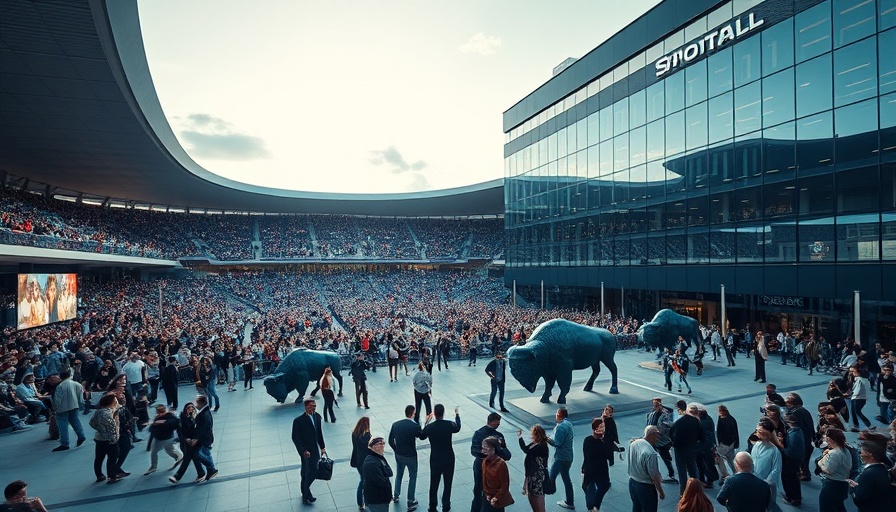
Exciting New Stadiums Transforming the American Sports Landscape
As the realm of sports evolves, monumental architectural ventures are reshaping the viewer experience across the United States. The construction of several massive sports stadiums not only showcases innovative designs but also aims to cater to the growing demands of sports enthusiasts. From state-of-the-art technologies to creative viewing facilities, these venues aim to provide an unparalleled experience for fans while integrating sustainability into their infrastructures.
The Future of Comfort in Fan Experiences
Modern stadium designs are focusing on creating spaces that not only enhance the aesthetic value of the structure but also prioritize viewer comfort. Innovations such as transparent ceilings and efficient seating arrangements are becoming commonplace in new projects. These features not only allow natural light into the stadiums but also enable better crowd flow and visibility. As a digitized lifestyle becomes increasingly prevalent, these enhancements will meet consumer expectations for an engaging experience that complements traditional viewing.
Building for the Future: Sustainable Stadium Designs
Among the new projects, the open-air stadium intended for the New York City Football Club stands out as it is designed to be entirely powered by electricity. This initiative follows a broader trend in urban construction as cities strive to reduce their carbon footprints significantly. Stadiums are being crafted not only to host events but to symbolize progress toward sustainable development in the sporting community.
Historical Connections to Local Culture
Each stadium is designed with the local culture and history in mind, as seen in the planned renovations for Highmark Stadium for the Buffalo Bills. The design emphasizes paying homage to the local architecture, ensuring that while new advances are brought forth, they do not erase the cultural identity of the community. This intertwining of new and old illustrates how architecture can celebrate place, giving fans a richer, more connected experience.
Investments Fueled by Team Relocations
The sports landscape in America is changing as teams shift cities for better facilities and financial incentives. The construction of Las Vegas' Athletics stadium reflects this transition, moving the team from Oakland in hopes of expanding its fan base and reaping the benefits of a vibrant sports culture. This migration is characteristic of the current sports environment where cities compete to attract teams with promise of better facilities and greater revenue opportunities.
Building Community Connections Through Sports
These stadiums are also designed with an emphasis on community engagement. Attending a game can now mean much more than just the sport itself; it becomes an event to be part of, sharing experiences with others in a dynamic, inviting environment. Bringing diverse fan bases together fosters a sense of belonging and community—not just on game day, but throughout the year with various events hosted at the venues.
Transformative Transformations: The Role of Technology
Integral to these stadiums are the cutting-edge technologies being introduced, aimed at enhancing connectivity for fans who want to keep up with the action while staying plugged in. Features like high-speed internet, app integration for food and merchandise purchase, and enhanced video displays are paving the way for a more interactive fan experience. As viewers increasingly seek to enhance their game day experiences, technology will play a pivotal role.
Looking Ahead: The Future of Stadium Design
As the landscape for sports stadiums continues to evolve, the dialogue around culture, sustainability, and innovation grows more pressing. These new venues will not only host games; they will become integral components of community life, enriching the fabric of the cities they inhabit. For digital nomads and remote workers, these spaces may also inspire innovative workspace designs—pushing the boundaries of what it means to work or relax in a contemporary setting.
With these upcoming stadiums paving the way into the future of sports, there’s a palpable excitement brewing both in cities and among fans looking forward to unparalleled experiences. As more people learn about and adapt these modern designs, the appreciation of both culture and sport will undoubtedly rise.
Are you curious about how these stadiums can inspire new ideas for your workspace? Stay informed and open to innovative designs as they influence both our leisure activities and professional landscapes.
 Add Row
Add Row  Add
Add 




Write A Comment